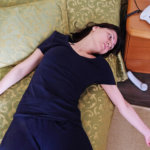
Cervical spondylosis, a malady that impacts the cervical spine, typically affects people as they age. This chronic condition impacts the cervical spine – the neck – and involves the degeneration of the bones and cartilage, including the discs and joints.
The condition, which is also referred to as cervical osteoarthritis or arthritis of the neck, can present a number of symptoms. Stiffness, debilitating pain that does not subside, and limited mobility are not uncommon; but, many individuals who are afflicted do not experience symptoms.
As the body ages, the bones and cartilage naturally break down, hence the reason why this condition is most common among the elderly; reports estimate that 90 percent of those who are 60 years of age or older suffer from this condition. However, there are other factors that can cause it as well.
Below, we will ll take a look at eight of the root causes of cervical spondylosis.
1. Age
As mentioned, age is the primary cause of cervical spondylosis. As an individual age, the bones and cartilage naturally break down throughout all parts of the body, including the cervical spine, or the neck. As this happens, the discs, which absorb shock within the cervical spine, enable mobility, and keep the neck together, are no longer able to perform their basic functions.
Cartilage, which lies between the discs and cushions, also degenerates, further reducing the function of the cervical spine. As a result of the breakdown of the discs and cartilage, pain, which can range in severity from mild to severe, and reduced mobility, which can also range in severity from chronic to severe, are not uncommon symptoms, is often associated with this condition.
However, as previously stated, some individuals who are afflicted with this condition do not experience any symptoms and don’t know they are affected.



